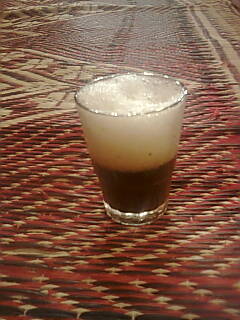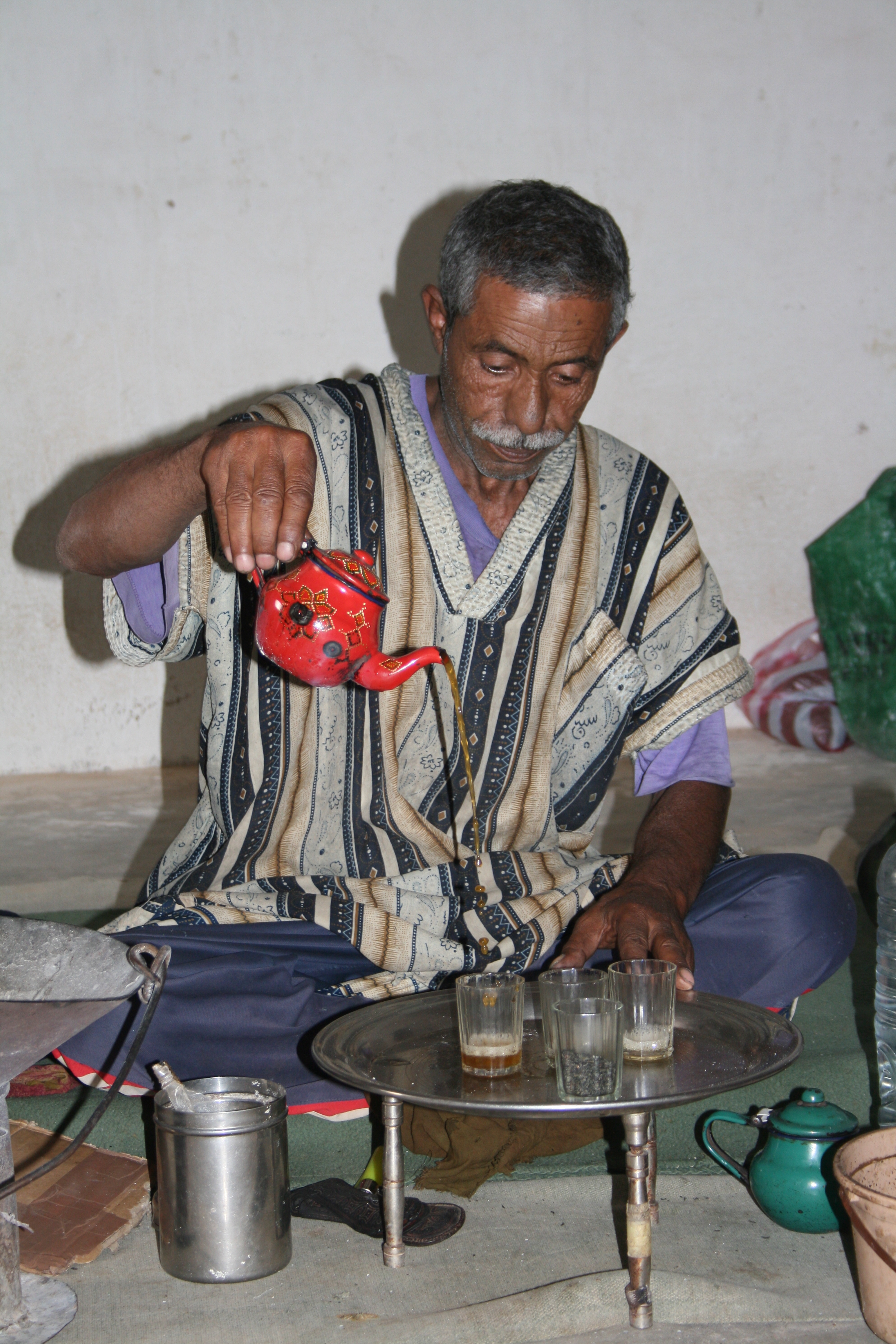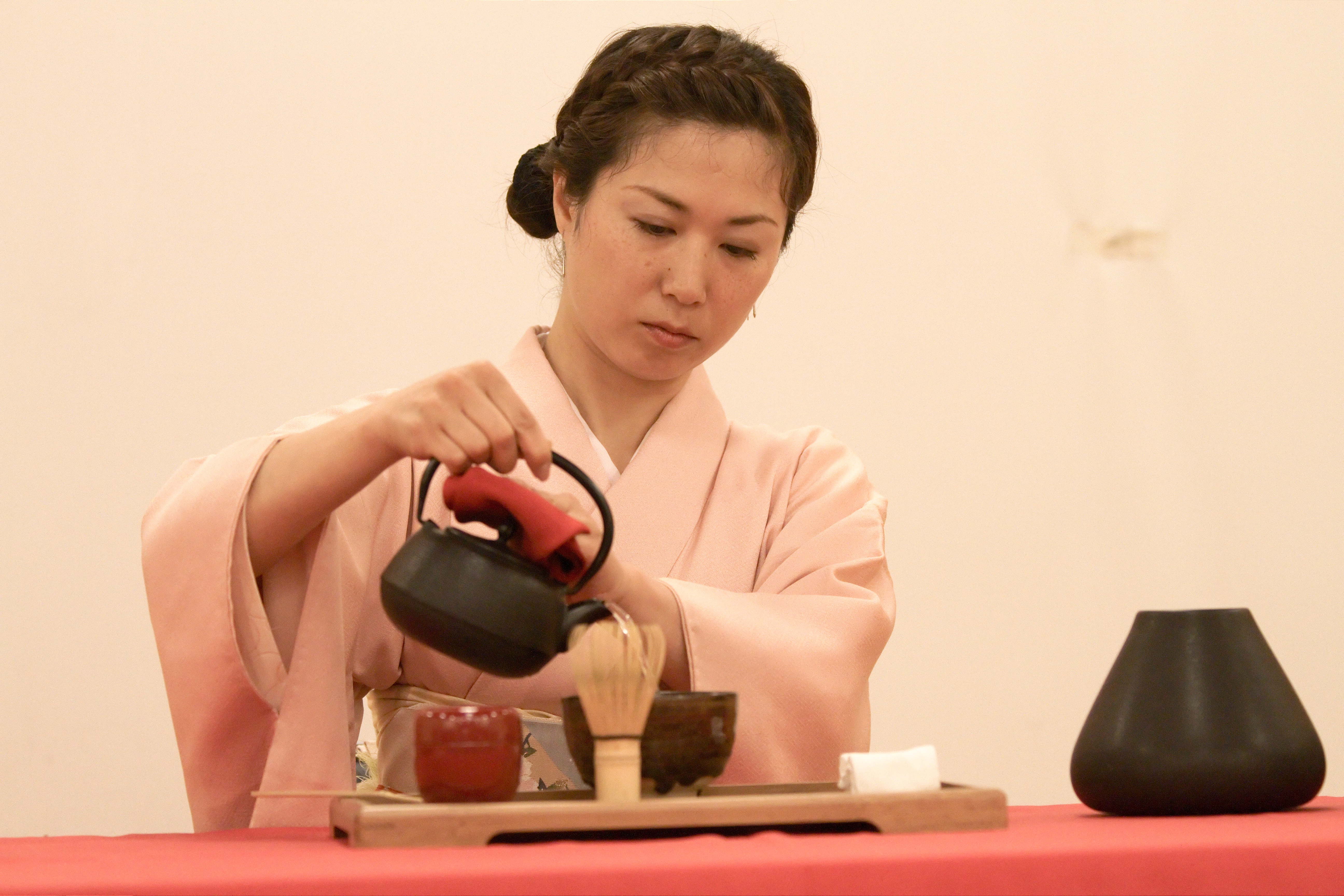|
Libyan Tea
Libyan tea is a strong beverage, prepared with traditional set of stainless utensils and served in a small glass cups. It is similar to Moroccan tea in prepared by boiling loose tea leaves but differ in presentation. Libyan tea is usually served in three courses with the last round including boiled skinless peanuts or almonds. Mint or basil are sometimes added as a flavor. Initially sugarless beverage is prepared to allow for a foam formation. Each cup when finally presented would have a layer of yellowish foam on top of the tea. See also *Libyan cuisine * Arabic tea *Maghrebi mint tea *Tea culture Tea culture is defined by the way tea is made and consumed, by the way the people interact with tea, and by the aesthetics surrounding tea drinking. Tea plays an important role in some countries. It is commonly consumed at social events, and ... References {{Reflist Arab cuisine Libyan cuisine ... [...More Info...] [...Related Items...] OR: [Wikipedia] [Google] [Baidu] |
Libya
Libya (; ar, ليبيا, Lībiyā), officially the State of Libya ( ar, دولة ليبيا, Dawlat Lībiyā), is a country in the Maghreb region in North Africa. It is bordered by the Mediterranean Sea to the north, Egypt to Egypt–Libya border, the east, Sudan to Libya–Sudan border, the southeast, Chad to Chad–Libya border, the south, Niger to Libya–Niger border, the southwest, Algeria to Algeria–Libya border, the west, and Tunisia to Libya–Tunisia border, the northwest. Libya is made of three historical regions: Tripolitania, Fezzan, and Cyrenaica. With an area of almost 700,000 square miles (1.8 million km2), it is the fourth-largest country in Africa and the Arab world, and the List of countries and outlying territories by total area, 16th-largest in the world. Libya has the List of countries by proven oil reserves, 10th-largest proven oil reserves in the world. The largest city and capital, Tripoli, Libya, Tripoli, is located in western Libya and contains over ... [...More Info...] [...Related Items...] OR: [Wikipedia] [Google] [Baidu] |
Moroccan Tea
Maghrebi mint tea (Maghrebi Arabic: , ''atay''; ar, الشاي بالنعناع, aš-šhāy bin-na'nā'; ), also known as Moroccan mint tea and Algerian mint tea, is a North African green tea prepared with spearmint leaves and sugar. It is traditional to the Greater Maghreb region (the northwest African countries of Morocco, Algeria, Tunisia, Libya, and Mauritania). Its consumption has spread throughout North Africa, parts of the Sahel, France, Spain, the Arab world, and Middle East. Mint tea is central to social life in the Maghreb. and is very popular among the Tuareg people of Algeria, Libya, Niger and Mali. The serving can take a ceremonial form, especially when prepared for a guest. The tea is traditionally made by the head male in the family and offered to guests as a sign of hospitality. Typically, at least three glasses of tea are served. The tea is consumed throughout the day as a social activity. The native spearmint ''naʿnāʿ'' () possesses a clear, pungent, mild ... [...More Info...] [...Related Items...] OR: [Wikipedia] [Google] [Baidu] |
Peanut
The peanut (''Arachis hypogaea''), also known as the groundnut, goober (US), pindar (US) or monkey nut (UK), is a legume crop grown mainly for its edible Seed, seeds. It is widely grown in the tropics and subtropics, important to both small and large commercial producers. It is classified as both a grain legume and, due to its high oil content, an oil crop. World annual production of shelled peanuts was 44 million tonnes in 2016, led by China with 38% of the world total. Atypically among legume crop plants, peanut pods develop underground (geocarpy) rather than above ground. With this characteristic in mind, the botanist Carl Linnaeus gave peanuts the specific epithet ''hypogaea'', which means "under the earth." The peanut belongs to the botanical Family (biology), family Fabaceae (or Leguminosae), commonly known as the legume, bean, or pea family. Like most other legumes, peanuts harbor symbiotic Nitrogen fixation, nitrogen-fixing bacteria in root nodules. The capacity to fi ... [...More Info...] [...Related Items...] OR: [Wikipedia] [Google] [Baidu] |
Mentha
''Mentha'' (also known as mint, from Greek , Linear B ''mi-ta'') is a genus of plants in the family Lamiaceae (mint family). The exact distinction between species is unclear; it is estimated that 13 to 24 species exist. Hybridization occurs naturally where some species' ranges overlap. Many hybrids and cultivars are known. The genus has a subcosmopolitan distribution across Europe, Africa - (Southern Africa), Asia, Australia - Oceania, North America and South America. Its species can be found in many environments, but most grow best in wet environments and moist soils. Description Mints are aromatic, almost exclusively perennial herbs. They have wide-spreading underground and overground stolons and erect, square, branched stems. Mints will grow 10–120 cm (4–48 inches) tall and can spread over an indeterminate area. Due to their tendency to spread unchecked, some mints are considered invasive. The leaves are arranged in opposite pairs, from oblong to lanceol ... [...More Info...] [...Related Items...] OR: [Wikipedia] [Google] [Baidu] |
Libyan Green Tea
Demographics of Libya is the demography of Libya, specifically covering population density, ethnicity, education level, health of the populace, economic status, and religious affiliations, as well as other aspects of the Libyan population. The Libyan population resides in the country of Libya, a territory located on the Mediterranean coast of North Africa, to the west of and adjacent to Egypt. Libyans live in Tripoli. It is the capital of the country and first in terms of urban population, as well as Benghazi, Libya's second largest city. History Historically Berber, over the centuries, Libya has been occupied by the Phoenicians, Greeks, Romans, Arabs, and Italians. The Phoenicians had a big impact on Libya. Many of the coastal towns and cities of Libya were founded by the Phoenicians as trade outposts within the southern Mediterranean coast in order to facilitate the Phoenician business activities in the area. Starting in the 8th century BC, Libya was under the rule of the ... [...More Info...] [...Related Items...] OR: [Wikipedia] [Google] [Baidu] |
Tea And Peanuts
Tea is an aromatic beverage prepared by pouring hot or boiling water over cured or fresh leaves of ''Camellia sinensis'', an evergreen shrub native to East Asia which probably originated in the borderlands of southwestern China and northern Myanmar. Tea is also rarely made from the leaves of ''Camellia taliensis''. After plain water, tea is the most widely consumed drink in the world. There are many different types of tea; some have a cooling, slightly bitter, and astringent flavour, while others have vastly different profiles that include sweet, nutty, floral, or grassy notes. Tea has a stimulating effect in humans primarily due to its caffeine content. An early credible record of tea drinking dates to the third century AD, in a medical text written by Chinese physician Hua Tuo. It was popularised as a recreational drink during the Chinese Tang dynasty, and tea drinking subsequently spread to other East Asian countries. Portuguese priests and merchants introduced it to E ... [...More Info...] [...Related Items...] OR: [Wikipedia] [Google] [Baidu] |
Libyan Cuisine
The cuisine of Libya is Arab and Mediterranean with Italian influence. One of the most popular Libyan dishes is ''bazin'', an unleavened bread prepared with barley, water and salt. ''Bazin'' is prepared by boiling barley flour in water and then beating it to create a dough using a ''magraf'', which is a unique stick designed for this purpose. Pork consumption is forbidden, in accordance with Sharia, the religious laws of Islam."Libya." Accessed June 2011. |
Arabic Tea
Arabic tea (, (pronounced ''shay'' , is a variety of hot teas popular throughout the Arab world. It is commonly served to guests and business partners at meetings and social events, and has been drunk by Arab people for centuries. It is considered to be a healthy drink largely because boiling water kills off most of the bacteria and viruses that would otherwise cause sickness, and some claim that it offers additional medicinal advantages. Arab society Tea is an important drink in the Arab world and is usually served with breakfast, after lunch, and with dinner. For Arabs, tea denotes hospitality, and is typically served to guests. Tea owes its popularity to its social nature; it is one of the most important aspects of hospitality and business etiquette in Arab culture. Importantly, one should not reject tea when offered, because it may be considered rude. Varieties There are many different types of Arabic tea: 220px, Maghrebi mint tea in Morocco * Sage ( ar, مريم� ... [...More Info...] [...Related Items...] OR: [Wikipedia] [Google] [Baidu] |
Maghrebi Mint Tea
Maghrebi mint tea (Maghrebi Arabic: , ''atay''; ar, الشاي بالنعناع, aš-šhāy bin-na'nā'; ), also known as Moroccan mint tea and Algerian mint tea, is a North African green tea prepared with spearmint leaves and sugar. It is traditional to the Greater Maghreb region (the northwest African countries of Morocco, Algeria, Tunisia, Libya, and Mauritania). Its consumption has spread throughout North Africa, parts of the Sahel, France, Spain, the Arab world, and Middle East. Mint tea is central to social life in the Maghreb. and is very popular among the Tuareg people of Algeria, Libya, Niger and Mali. The serving can take a ceremonial form, especially when prepared for a guest. The tea is traditionally made by the head male in the family and offered to guests as a sign of hospitality. Typically, at least three glasses of tea are served. The tea is consumed throughout the day as a social activity. The native spearmint ''naʿnāʿ'' () possesses a clear, pungent, mild ... [...More Info...] [...Related Items...] OR: [Wikipedia] [Google] [Baidu] |
Tea Culture
Tea culture is defined by the way tea is made and consumed, by the way the people interact with tea, and by the aesthetics surrounding tea drinking. Tea plays an important role in some countries. It is commonly consumed at social events, and many cultures have created intricate formal ceremonies for these events. East Asian tea ceremonies, with their roots in the Chinese tea culture, differ slightly among East Asian countries, such as the Japanese or Korean variants. Tea may differ widely in preparation, such as in Tibet, where the beverage is commonly brewed with salt and butter. Tea may be drunk in small private gatherings ( tea parties) or in public (tea houses designed for social interaction). Afternoon tea is a British custom with widespread appeal. The British Empire spread its own interpretation of tea to its dominions and colonies, including modern-day regions of Hong Kong, India, and Pakistan, which had pre-existing tea customs, as well as regions such as East Afri ... [...More Info...] [...Related Items...] OR: [Wikipedia] [Google] [Baidu] |
Arab Cuisine
Arab cuisine ( ar, المطبخ العربي) is the cuisine of the Arabs, defined as the various regional cuisines spanning the Arab world, from the Maghreb to the Fertile Crescent and the Arabian Peninsula. These cuisines are centuries old and reflect the culture of trading in baharat (spices), herbs, and foods. The regions have many similarities, but also unique traditions. They have also been influenced by climate, cultivation, and mutual commerce. Medieval cuisine Breads The white bread was made with high-quality wheat flour, similar to bread but thicker, the fermented dough was leavened usually with yeast and "baker's borax" () and baked in a '' tandoor''. One poetic verse describing this bread: "In the farthest end of Karkh of Baghdad, a baker I saw offering bread, splendidly marvelous. From purest essence of wheat contrived. Radiant and absolute, you may see your image reflected, crystal clear. rounds glowing with lovely whiteness, more playful than gorgeous singin ... [...More Info...] [...Related Items...] OR: [Wikipedia] [Google] [Baidu] |







